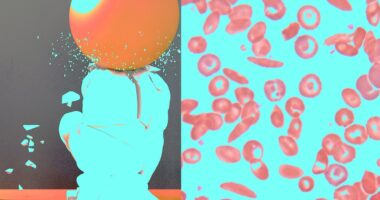A NEW ‘Super-Earth’ that could be habitable has been discovered by researchers.
Super-Earths are a class of outer-solar system planets (exoplanets) and can be made up of gas, rock, or a combination of both.
They tend to have a mass higher than Earth’s but lower than Uranus’ and Neptune’s, which are 14.5 and 17 times Earth’s, respectively.
The newly uncovered planet, dubbed TOI-715b, is roughly 1.5 times the size of Earth and orbits a red dwarf star 137 light-years away.
It sits within the star’s conservative habitable zone (CHZ), where liquid water could potentially exist on its surface.
The system also potentially harbors another, Earth-sized planet that’s yet to be confirmed.
If confirmed, it would be the smallest potentially habitable planet discovered by the TESS telescope.
Nasa defines the ‘Habitable Zone’ as the distance from a star at which liquid water could exist on orbiting planets’ surfaces.
In the CHZ, however, a rocky planet receives between 0.42 and 0.842 as much solar insolation as Earth does.
“Any rocky planet receiving that much energy is in the CHZ, regardless of distance,” Science Alert noted.
Most read in News Tech
This new research was published in the journal Monthly Notices of the Royal Astronomical Society.
TOI-715b is a compelling target for further study because telescopes like the James Webb Space Telescope (JWST) could analyze its atmosphere for signs of habitability, like water vapor or other gasses.
“At long last, the era of JWST has arrived, and with it, the age of detailed exoplanetary atmospheric characterization,” the study reads.
This discovery adds to the growing number of potentially habitable planets detected beyond our solar system.
While TOI-715b is near its ‘Habitable Zone’, it is unlikely to support life as we know it.
Because Earth is our only template, researchers are not sure what life could look like on exoplanets.
“Life on other planets might be like nothing on Earth – it could be life as we don’t know it,” Nasa has said in the past.
“But it makes sense, at least at first, to search for something more familiar. Life as we know it should be easier to find. And ‘the light’s better’ in the habitable zone.”
For decades, astronomers have been trying to find a planet like our own Earth, which can support life.
READ MORE SUN STORIES
To date, astronomers have discovered thousands of exoplanets – some of which could host life.
Of these exoplanets, “super-Earths” are the ones of most interest to researchers.









